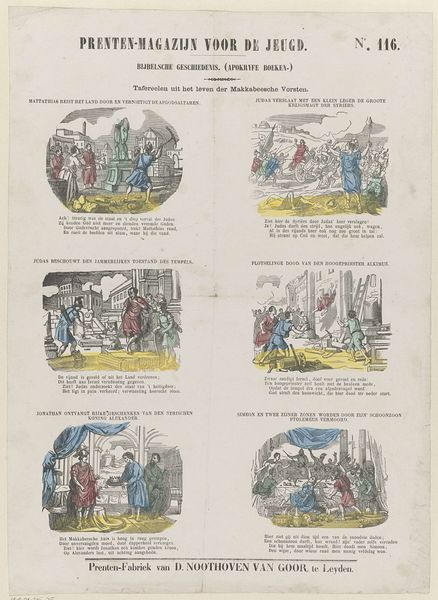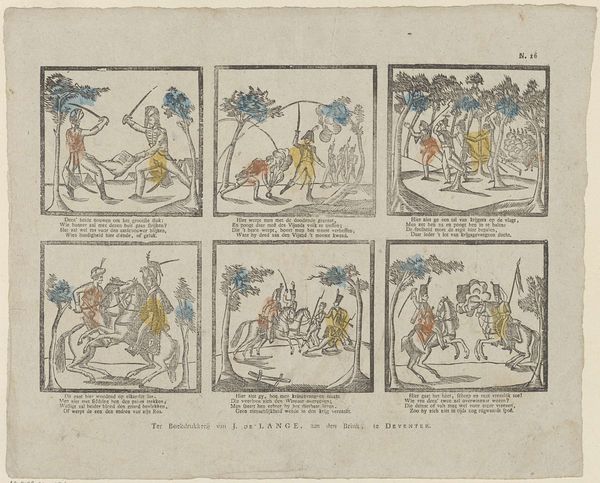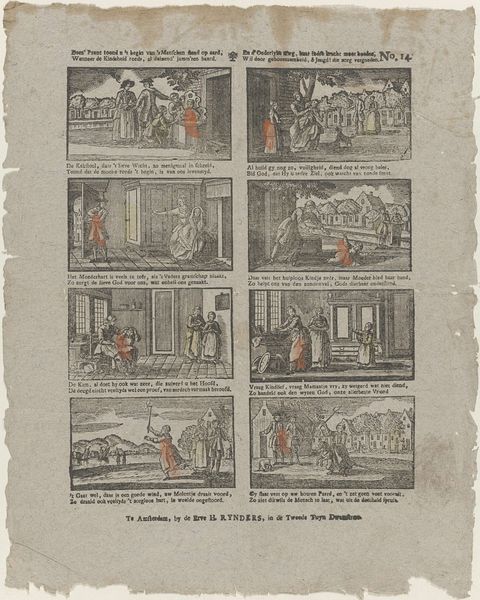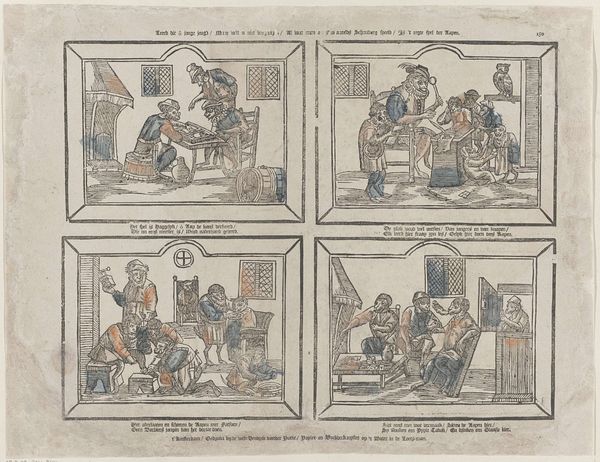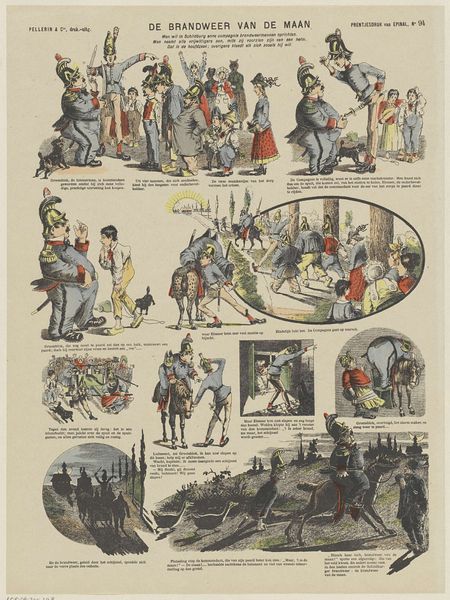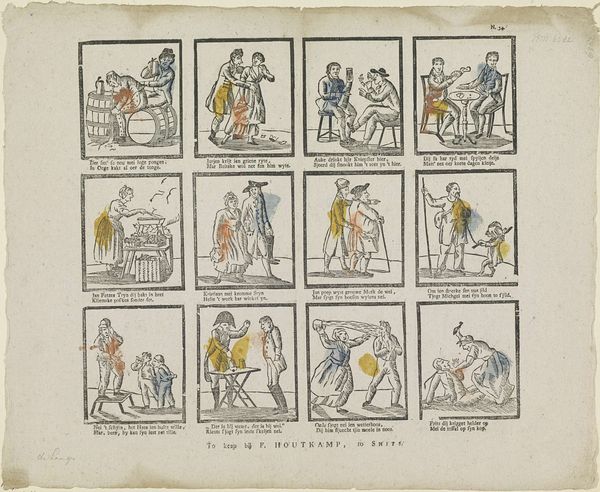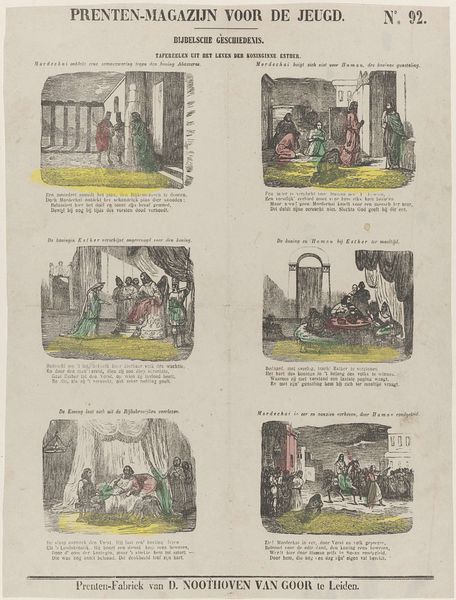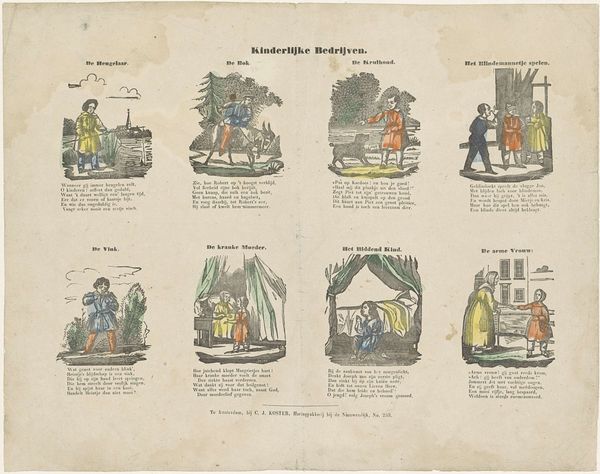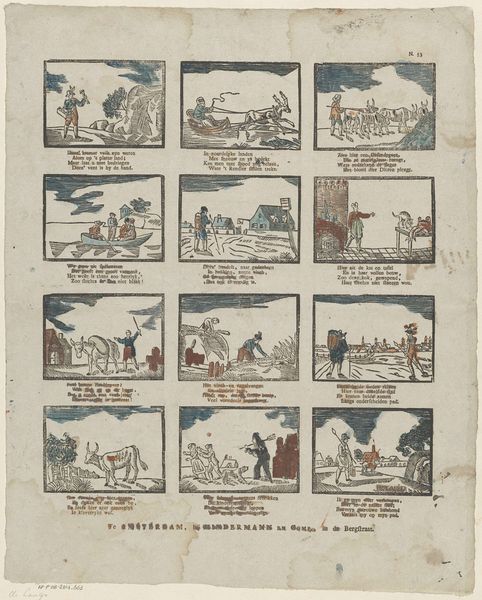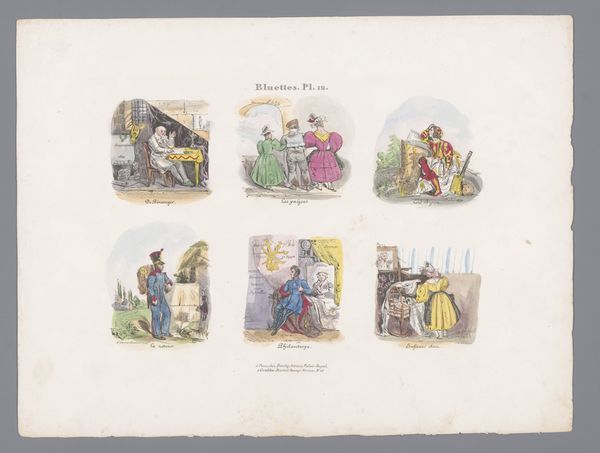
Zie, kindren! hoe men hier met zoet vermaak kan spelen, / Bevryd van twist, gekyf, van razen en krakeelen; / Indien gy, spelend', aan uw' Ouderen behaagd, / Krygd gy, wat gift is dat! meer prenten als gy vraagd 1791 - 1812
0:00
0:00
jacobusthompson
Rijksmuseum
print, etching, paper, ink
#
narrative-art
# print
#
etching
#
paper
#
ink
#
romanticism
#
genre-painting
Dimensions: height 325 mm, width 407 mm
Copyright: Rijks Museum: Open Domain
Curator: Welcome. Before us, we have a print created sometime between 1791 and 1812, carrying the lengthy title "Zie, kindren! hoe men hier met zoet vermaak kan spelen, / Bevryd van twist, gekyf, van razen en krakeelen; / Indien gy, spelend', aan uw' Ouderen behaagd, / Krygd gy, wat gift is dat! meer prenten als gy vraagd" by Jacobus Thompson. Editor: It’s charming! The series of circular vignettes gives a sense of movement. I am especially drawn to the softness in line and how it contributes to the overall idyllic feel. It reminds me of bucolic scenes. Curator: Indeed. This piece is held at the Rijksmuseum. Thompson was known for book illustrations, and you can really see that aesthetic here. It is rendered through etching on paper, a common and affordable medium, intended for broad consumption and distribution. Editor: I noticed the slight variations in the coloring of each of the vignettes, contributing to its captivating dynamic feel and highlighting subtle variations within a single scene. Do you see how it emphasizes both a narrative flow, but also stands on its own. It is really clever! Curator: The inscription at the top tells us that these scenes are designed to showcase the joys of play, free from quarrel and rage, promising even more images to children who please their elders, pointing to its role as moral instruction but, interestingly, also hinting at the circulation of imagery within family and social contexts. Editor: Interesting, and it provides another layer of appreciation as it goes to that theme within the work, this speaks to Romanticism so clearly: nostalgia, the simple joys of the family. I love seeing the soft textures playing against this backdrop. Curator: Precisely. Understanding such images means looking at how they were used in society and how the family unit consumed and was influenced by such romanticized visions of childhood and domestic bliss. Editor: Absolutely. Thank you, delving into its historical place really makes you see the whole composition in new ways. Curator: My pleasure! There is always more to discover when you contextualize an image in the larger story of society.
Comments
No comments
Be the first to comment and join the conversation on the ultimate creative platform.
